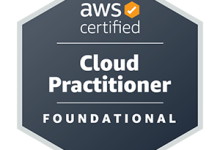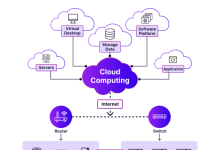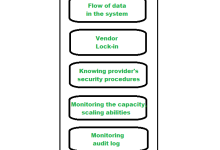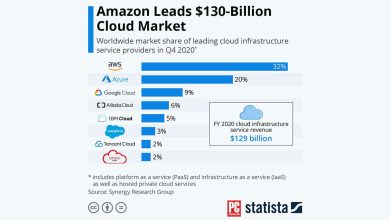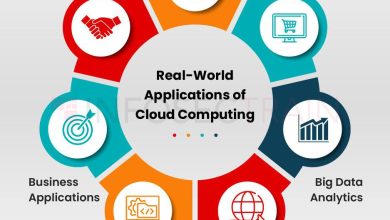cloud computing for non profits
Ads
The Future is in the Cloud
Cloud computing has become an integral part of modern businesses, offering scalability, flexibility, and cost-effectiveness. Nonprofits can also benefit tremendously from utilizing cloud technology to enhance their operations and achieve their mission more efficiently.
Introduction to Cloud Computing for Nonprofits
Cloud computing involves storing and accessing data and programs over the Internet instead of on a physical hard drive. Nonprofits can access cloud services for tasks such as storing donor information, managing programs, collaborating with remote staff, and hosting websites. It provides a cost-effective and seamless way to streamline operations and enhance productivity.
The strengths and weaknesses of cloud computing for nonprofits need careful consideration to make an informed decision on whether to make the transition. Let’s explore both sides of the coin in greater detail:
Strengths of Cloud Computing for Nonprofits
Cost-Effectiveness
One of the primary advantages of cloud computing for nonprofits is the cost-effectiveness it offers. By utilizing cloud services, nonprofits can eliminate the need for expensive hardware and software installations, as well as the costs associated with maintenance and upgrades. This allows organizations to allocate their limited resources towards essential programs and services rather than IT infrastructure.
Scalability
Cloud computing allows nonprofits to scale their operations based on their needs. Whether an organization is experiencing rapid growth or a temporary surge in demand, cloud services can be easily adjusted to accommodate these changes. This flexibility ensures that nonprofits can adapt quickly to new challenges and opportunities without incurring additional costs.
Accessibility and Collaboration
With cloud computing, nonprofits can access their data and applications from anywhere with an internet connection. This level of accessibility makes it easier for remote staff members, volunteers, and partners to collaborate effectively, regardless of their physical location. Cloud-based collaboration tools also streamline communication and enhance teamwork within the organization.
Data Security
Cloud service providers invest heavily in robust security measures to protect the data of their users. Nonprofits can benefit from enterprise-level security features that would otherwise be costly to implement independently. This ensures that sensitive donor information and organizational data are safeguarded against cyber threats and data breaches.
Disaster Recovery and Business Continuity
In the event of a natural disaster, hardware failure, or other unforeseen circumstances, cloud computing offers reliable disaster recovery solutions. Nonprofits can back up their data on secure cloud servers to ensure that critical information is protected and easily recoverable. This contributes to the organization’s overall business continuity and minimizes downtime.
Efficiency and Productivity
Cloud computing streamlines processes and eliminates manual tasks, allowing nonprofits to operate more efficiently. Automated workflows, integrated applications, and real-time data access improve productivity and enable organizations to focus on their core mission. By leveraging cloud technology, nonprofits can accomplish more with fewer resources.
Sustainability
Using cloud services is environmentally friendly and sustainable. By migrating to the cloud, nonprofits can reduce their carbon footprint by eliminating the need for on-premises data centers and servers. Cloud infrastructure is designed to be energy-efficient, which aligns with the sustainability goals of many nonprofits.
Weaknesses of Cloud Computing for Nonprofits
Dependency on Internet Connectivity
One of the primary challenges of cloud computing is its reliance on internet connectivity. Nonprofits in remote or underserved areas may face limitations in accessing cloud services due to unreliable or slow internet connections. This can hinder the organization’s ability to operate smoothly and efficiently.
Data Privacy Concerns
While cloud service providers implement robust security measures, some nonprofits may have concerns about the privacy of their data. Storing sensitive information on external servers raises questions about data ownership, access control, and compliance with data protection regulations. Nonprofits must carefully evaluate the privacy implications of using cloud services.
Vendor Lock-In
Switching cloud service providers or migrating data between platforms can be challenging and costly. Nonprofits may find themselves locked into a specific vendor due to compatibility issues or contractual obligations. This lack of flexibility can limit the organization’s ability to adapt to changing technology trends and evolving needs.
Regulatory Compliance
Nonprofits operating in highly regulated industries or handling sensitive data must ensure that their cloud provider complies with relevant regulations and standards. Maintaining compliance with data protection laws, such as GDPR or HIPAA, is crucial to avoid legal risks and protect the confidentiality of donor information. Nonprofits should carefully vet cloud providers for compliance before entrusting them with sensitive data.
Technical Support and Training
Adopting cloud technology requires staff training and ongoing technical support to maximize its benefits. Some nonprofits may lack the internal expertise to manage cloud services effectively or troubleshoot problems that arise. Investing in training and support services is essential to ensure a smooth transition to the cloud and optimize the organization’s use of technology.
Data Migration Challenges
Transferring existing data and applications to the cloud can be a complex and time-consuming process. Nonprofits must plan carefully for data migration to avoid data loss, compatibility issues, or disruptions to services. Effective data migration strategies and thorough testing are essential to minimize risks and ensure a successful transition to the cloud.
Performance and Reliability
While cloud service providers offer high levels of uptime and reliability, occasional outages or performance issues can still occur. Nonprofits relying heavily on cloud services may experience downtime that disrupts operations and impacts productivity. It is essential for organizations to have contingency plans in place to mitigate the effects of service interruptions.
Table: Overview of Cloud Computing for Nonprofits
| Advantages | Disadvantages |
|---|---|
| Cost-Effectiveness | Dependency on Internet Connectivity |
| Scalability | Data Privacy Concerns |
| Accessibility and Collaboration | Vendor Lock-In |
| Data Security | Regulatory Compliance |
| Disaster Recovery and Business Continuity | Technical Support and Training |
| Efficiency and Productivity | Data Migration Challenges |
| Sustainability | Performance and Reliability |
Frequently Asked Questions (FAQs) About Cloud Computing for Nonprofits
1. How secure is the cloud for nonprofit organizations?
The security of cloud services varies depending on the provider and the measures they implement to protect data. Nonprofits should carefully select reputable cloud providers that prioritize security and offer encryption, access controls, and regular security audits.
2. What are the costs associated with migrating to the cloud?
The costs of migrating to the cloud depend on factors such as the size of the organization, the complexity of data migration, and the selected cloud service provider. Nonprofits should consider both one-time migration costs and ongoing subscription fees when budgeting for cloud adoption.
3. How can nonprofits ensure data privacy and compliance in the cloud?
Nonprofits must work with cloud providers that adhere to industry-specific regulations and compliance standards. Implementing data encryption, access controls, and regular security assessments can help organizations maintain data privacy and compliance in the cloud.
4. What happens to nonprofit data if a cloud service provider goes out of business?
Nonprofits should include data backup and recovery clauses in their service agreements to protect against the potential closure of a cloud provider. It is essential to have contingency plans in place and ensure that data can be retrieved or migrated to another provider if necessary.
5. How can nonprofits leverage cloud technology to enhance fundraising efforts?
Cloud computing offers nonprofits various tools and platforms to streamline fundraising activities, manage donor information effectively, and analyze donation trends. By utilizing cloud-based fundraising solutions, nonprofits can enhance donor engagement and maximize fundraising success.
6. What are the key considerations when selecting a cloud service provider for a nonprofit organization?
When choosing a cloud provider, nonprofits should evaluate factors such as data security measures, compliance certifications, uptime reliability, customer support, migration assistance, and scalability options. It is crucial to select a provider that aligns with the organization’s needs and values.
7. How can nonprofits ensure a smooth transition to the cloud without disruptions?
To minimize disruptions during the migration process, nonprofits should develop a comprehensive transition plan, communicate with stakeholders about the changes, provide staff training on cloud technology, conduct thorough testing, and monitor performance post-migration. Collaboration with experienced IT professionals can also facilitate a seamless transition.
Conclusion: Embracing the Future of Cloud Computing
As technology continues to advance, nonprofits must adapt and leverage cloud computing to maximize their impact and achieve their goals more effectively. Despite the challenges associated with cloud adoption, the benefits far outweigh the risks. By carefully considering the strengths and weaknesses of cloud computing, nonprofits can make informed decisions that position them for success in the digital age.
Take the first step towards transformation and explore the possibilities of cloud computing for your nonprofit organization. Unleash the power of the cloud to drive innovation, collaboration, and efficiency in pursuit of your mission. Embrace the future with confidence and lead your organization towards a brighter tomorrow with cloud computing at the helm.
Disclaimer
The information provided in this article is for informational purposes only and should not be construed as legal, financial, or professional advice. It is essential for nonprofits to conduct thorough research, seek guidance from qualified professionals, and assess their unique circumstances before making decisions related to cloud computing. While cloud technology offers numerous benefits, it is crucial to consider the specific needs and challenges of each organization to ensure a successful transition to the cloud.
